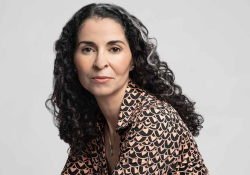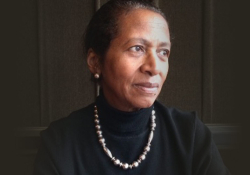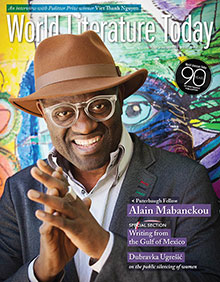Son Jarocho, Rock and Roll, and Bridges between Cultures: A Conversation with Agustín del Moral Tejeda
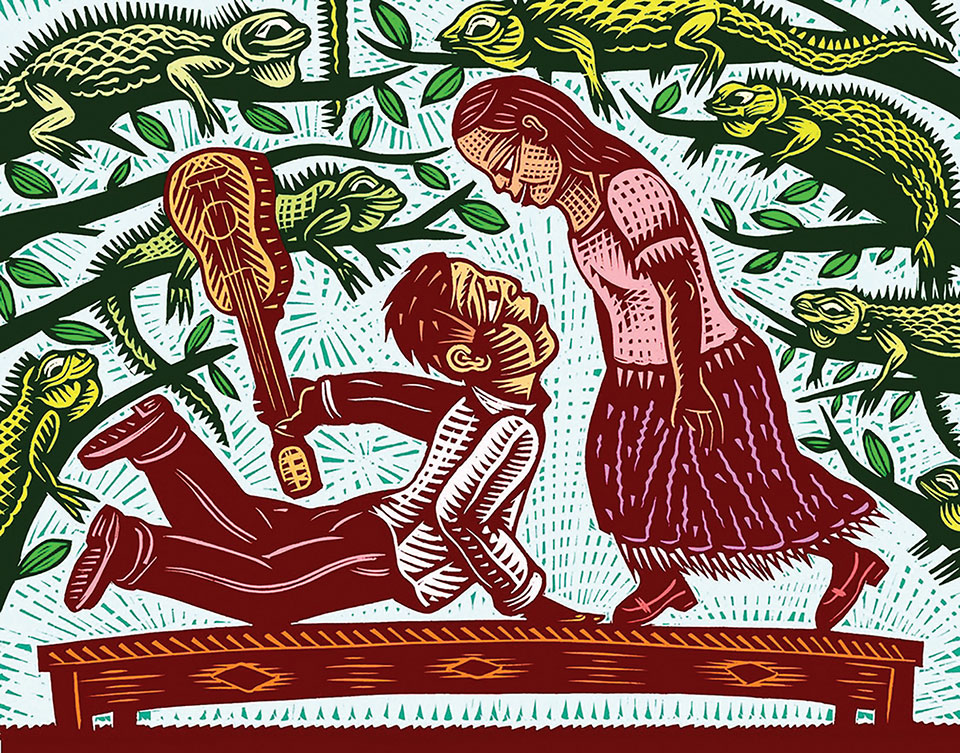
Agustín del Moral Tejeda was born in Las Choapas, Veracruz, in 1956. An accomplished writer, journalist, editor, translator, and activist, he currently lives and works in Xalapa at the University of Veracruz. He has published two novels, Nuestra alma melancólica en conserva (1997) and Cuéntame lo que me pasa (2009), as well as a work of creative nonfiction, Un Crack Mexicano: Alberto Onofre (2003). For many years he served as director of the university press of Veracruz, a key supporter of literary publication in Mexico. I met with him in his university office in October 2015, and we discussed the roles played by music of the Gulf region (especially son jarocho and rock) in his fiction.
Dolores Flores-Silva: How did the idea of Cuéntame lo que me pasa (Tell me what’s happening to me) start?
Agustín del Moral Tejeda: First, I took on a challenge I set for myself. Before this book, I had published a testimonial autobiographical novel and a biographical chronicle of a soccer player. This means I started, in both cases, with a set of facts that already existed, and my work consisted of giving it all form and structure. The challenge I set for myself with Cuéntame lo que me pasa was to write a book with three long plots that were, basically, fiction, something I didn’t have already at hand to work on. That was a starting point. . . . So I asked myself: What are three things I would have liked to be but did not become?
DFS: So the book has a certain touch of Agustín del Moral’s autobiography.
ADMT: Yes, indeed. With a sense that I wanted to work out in fiction what I couldn’t be in reality. My answer was that I would’ve liked to have been a soccer player, a rock-and-roller, or a revolutionary. Those are the perspectives that fed this book.
DFS: This reminds me of what the writer Rosario Ferré told me some years ago: “There is always a moment when the narrative takes you to a level that you, as the writer, never expected to reach.” In the story of a rock star, I don’t know if you realized it, or if it was intended to present the creation of a bridge between two cultures—of the United States and the Mexican jarocha—but that’s what it seems that you did. I don’t know if you had the intention or if at any moment it occurred to you that in order to be able to talk about what you are not, the creation of a bridge could give the opportunity to get closer to the topic in mind.
ADMT: Somehow I had that intention: maybe not with total clarity, but I had it. With this story I wanted to put tradition and modernity face to face. In this case tradition is represented by the son jarocho, and modernity by rock and roll. Obviously, what most stands out is the importance of American rock. So honestly, I had no intent to create that bridge, but I did set out to compare these two worlds: of tradition and modernity. And in fact, just as you pointed out, this bridge was established within a local-regional culture and the universal culture, within the Papaloapan region and all that vast geographical area across the globe that has been influenced by rock, including, of course, the United States.
DFS: At any moment did the central character explain the union or fusion of those cultures in a positive way? In the end why do we see him returning to his roots and his culture? What does that tell us? He couldn’t achieve that fusion; why couldn’t he create a bridge between those two cultures? Or somehow does it tell us that the union exists but our roots can’t be forgotten, that the union exists but you can’t forget those roots from which you come?
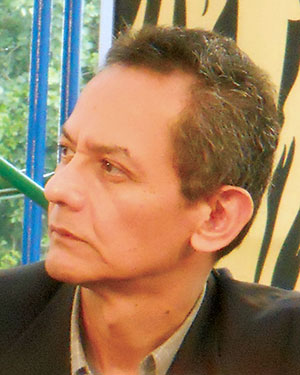 ADMT: I would go more for the second possibility. I believe the protagonist did manage to achieve that bridge, the truth behind the challenge . . . when the protagonist questions why rock in English has universal reach and why it is that rock in other languages doesn’t achieve that status. I do believe it’s possible to establish those bridges between one culture and another, one genre of music and another, but in this particular character’s case there comes a moment when the roots weigh on him. From precisely there, he returns to his traditions.
ADMT: I would go more for the second possibility. I believe the protagonist did manage to achieve that bridge, the truth behind the challenge . . . when the protagonist questions why rock in English has universal reach and why it is that rock in other languages doesn’t achieve that status. I do believe it’s possible to establish those bridges between one culture and another, one genre of music and another, but in this particular character’s case there comes a moment when the roots weigh on him. From precisely there, he returns to his traditions.
DFS: But the union is sought out, and you can live with what the neighbors offer, as long as you don’t get involved so completely that you lose your identity, right?
ADMT: Exactly.
DFS: What can you add to that?
ADMT: Now that we are talking on these topics, the movie La Bamba comes to mind. It might be an example out of context, but I think it works. In the movie we see that Ritchie Valens adapts a tradition, “La bamba,” to the language of rock and roll. Therefore, I can see that establishing that bridge is possible. What follows is precisely what you point out: how not to lose the identity, how to preserve those roots and how to nourish them. I think that is the key.
DFS: Yes, I agree, and this brings me to another question. You mention the bridge [el puente] that the protagonist uses to travel back to his town. Here in Mexico “a bridge” can mean to have free days, without schoolwork. That trip on “the bridge” of Todos Santos (created for rest and to honor the dead) is critical because the character carries different music (rock) to his town and refers, to some extent, to globalization. But for the people of the town, it’s difficult to adapt to this music, and they rejected it. What is your opinion on this rejection? Is it a positive thing, or is it merely prejudice?
ADMT: I think the first element to consider is the natural rejection that any culture expresses when it is exposed to another. I can’t generalize, but indeed there is at some point a rejection because of a sense of forced change. Another element to consider is the history that has taken place on this land. I talk about the process of cultural colonization that has been experienced. How many cultures have disappeared or are at risk of disappearing due to the enslavement the colonizer exerts over the colonized? In this case we see some of both elements. Now, what is there or what can be there in a cultural encounter, beyond what’s socially embedded, beyond consequent exercise of violence, etc.? María Zambrano’s words come to mind in the sense that a historical catastrophe—as at the time of the conquest of America—stops being catastrophic if a new reality takes place and plays the role of redemption. I believe that despite the conquest and colonization of America, a new reality emerged for both groups: for the ones who brought a new culture and the ones who adopted it.
I believe that despite the conquest and colonization of America, a new reality emerged for both groups: for the ones who brought a new culture and the ones who adopted it.
DFS: And do you consider this positive?
ADMT: Of course I do. There is something positive because there is something new in this fusion. In the long run, it is humanity as a whole that has been enriched.
DFS: And in this aspect the music for you, as a writer, became meaningful when you took into account two different styles, two rhythms. Why did you use music and not another element important to the culture?
ADMT: Basically because music was the main motif in this novel, because it is one of the three things I would have liked to have done and was not able to do, especially as a rocker. And, because music may be one of the artistic manifestations that has the greatest capacity to unite peoples and cultures.
DFS: What can you add about the moment when the protagonist takes up rock and roll? Does this come with a risk for him to lose contact with his family and with the people of his town and thus become a stranger who has to live the consequences of that separation?
ADMT: In a sense he lives all that you mention. He grows up within a family of musicians, traditional soneros, and at a given moment in his youth he discovers rock. After going through a process of internal conflict (caused by his father’s questioning when the young man realizes he has been rejected by his hometown), he finally decides to commit to rock, get completely into the world of rock. Yes, he lives a loss, but I wouldn’t say of identity. It’s a loss of contact and relationship with his people. I don’t think he experiences a loss of identity because our first roots mark us in a definitive way. In that sense, there comes a moment in his life in which he feels that what he has been given from his interest in rock has already been given to him, and what he could have done in the world of rock he has already done. This is when he feels it’s time to return to his roots.
DFS: You mean to say that the character doesn’t lose his identity as a Jarocho (Veracruzano) but only experiments and gives recognition to what comes from outside his environment, because at some point he welcomes something foreign?
ADMT: This interpretation seems very wise. The character gives his life a new turn. He gets into another culture completely, he experiments with it, he inverts life. But just as you pointed out, without losing his first identity: with his family, his roots, his people, his culture.
DFS: Are you trying to say Elvis Presley and Agustín Lara and Toña la Negra have the same level of importance to him?
ADMT: From my point of view, yes, they do.
DFS: This means that if he manages to build a bridge it allows him to cross, but it also allows him to return.
ADMT: Exactly, that’s it. It is a bridge for a round-trip.
DFS: Yes, because the bridge can exist but doesn’t fulfill its purpose if it only serves to move us in one direction.
ADMT: Quite so.
DFS: From the perspective of Jarochos and the dark-skinned from our state, Veracruz, did you have in mind to join together the African American culture that predominates in the southern US with Afro-Mexican culture through music?
ADMT: Not really. What I can tell you for sure is that I like jazz, rock, and blues very much. There is a part in the story where the protagonist questions, in theoretical terms, the universal spread of rock in English and the limited reach of rock in other languages. The character tries to find an explanation in the first musical modifications of black communities in spirituals and gospel songs: those songs sung in churches because churches were the only spaces where the enslaved were able to sing freely and could express themselves. The character learns that this is the beginning of all kinds of musical styles including jazz, and obviously rock and blues. To be honest, I didn’t try to establish a bridge between Afro-Americans and Afro-Mexicans; however, what my story touches with respect is the admiration and gratitude I have for the black presence in our cultures. From the world of slavery emerges a musical manifestation that has spread across our whole planet. That’s what my story is about. It is in homage to the black roots that have a living presence in all kinds of musical styles that have achieved a universal rank.
DFS: And talking about the importance of black roots in Mexico and taking into account the son jarocho and all the jarocha music in Veracruz, do you think this is helping Mexicans, in general, to preserve, historically speaking, the African influence that is part of a unique identity?
ADMT: Yes, of course! Even though I don’t know the history of the son jarocho very well, I know that the professionals in that field acknowledge the great importance of this influence in our country. And there is something else. People say that the son jarocho has not only African and Spanish roots but indigenous roots as well. This enriches the perspective of unity, even more, among different cultures. The fusion of cultures originated a new musical expression. I believe that preserving, rescuing, and even updating the son jarocho is, to some extent, preserving the present black roots in Veracruz.
October 2015
Translation from the Spanish
By Dolores Flores-Silva








